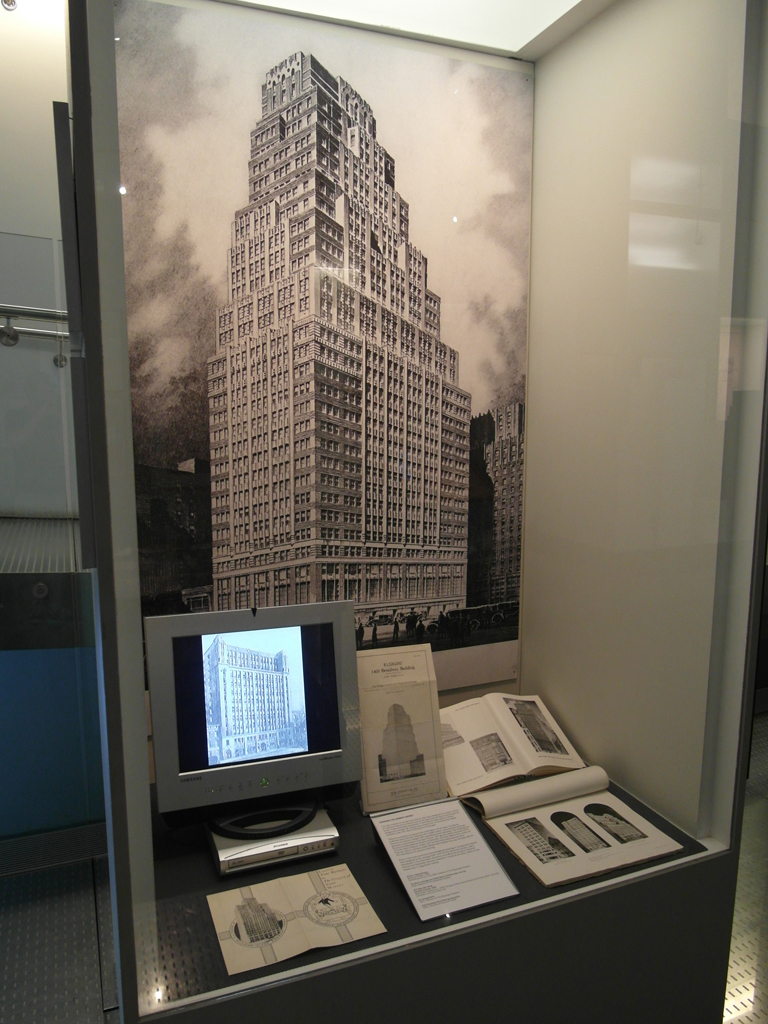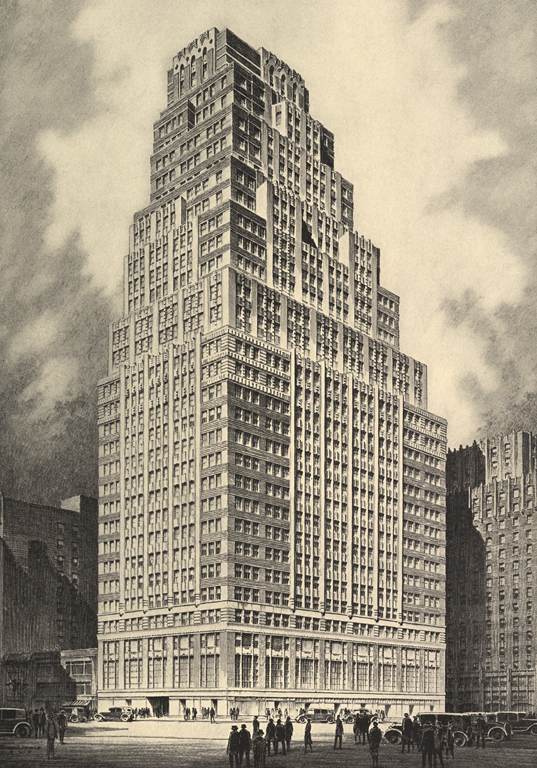The Skyscraper Museum is devoted to the study of high-rise building, past, present, and future. The Museum explores tall buildings as objects of design, products of technology, sites of construction, investments in real estate, and places of work and residence. This site will look better in a browser that supports web standards, but it is accessible to any browser or Internet device.
Architects of the Garment District


Bricken Textile Building, Buchman & Kahn, 1929. Architectural Forum, June 1930, Collection of The Skyscraper Museum.
The vast majority of the Garment District lofts were designed by a small number of relatively obscure architects such as George & Edward Blum and Schwartz & Gross. These architects specialized in working with speculative builders, designing buildings that utilized every square inch of rentable floor space available under the city's building and zoning laws.
Different architects composed their buildings in varied ways. The Blums preferred asymmetrical massing with modest towers, while Schwartz & Gross favored symmetrical designs with cascading central setbacks. The buildings are generally ornamented in a simple manner, with generic Gothic (favored by the Blums) and Renaissance (favored by Schwartz & Gross) details. Only rarely, as at Emery Roth's Fashion Tower, with its terra-cotta peacocks and other features, did an architect create details that reflected the use of these lofts for the manufacture of women's clothing.
Some of the most prominent and prestigious buildings in the Garment District were designed by Ely Jacques Kahn and his firm, Buchman & Kahn. Kahn specialized in the skyscraper showroom and office structures on Seventh Avenue and Broadway that were detailed in inventive Art Deco motifs on the fa�ade and in magnificent lobbies.
